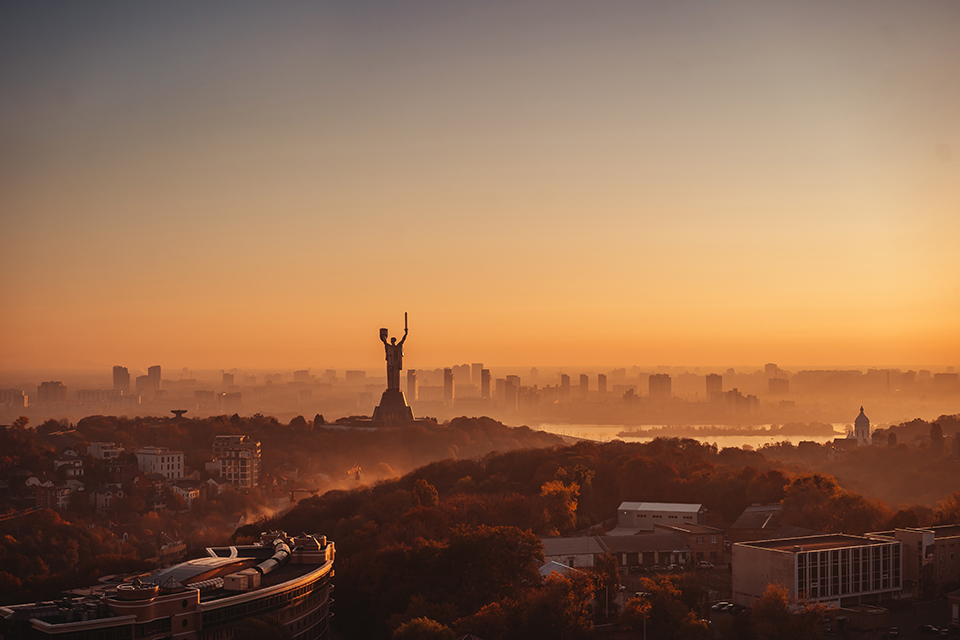It is a race to the bottom for who can pay their workers the least to produce the clothes the quickest and cheapest.
In the clothing industry, one sees the classic case of the "race to the bottom" that can come with unrestrained globalization.
As trade barriers are reduced, clothing retailers face intensive competitive pressure and are squeezed for profits. They demand cheaper goods from manufacturers. The manufacturers respond by paying less to contractors, and the contractors lower their piece rates and spend less money maintaining working conditions.
Quite often, the contractors move abroad because the "race to the bottom" also happens worldwide. Developing countries outbid each other with concessions (for example, wages are set below the legal minimum, child labor, and unhealthy work conditions are overlooked) to attract foreign investors.
In the Race to the bottom, the word which emerges is “Sweatshops”.

The garment industry, not only the fast fashion industry, is built on poverty wages and sweatshop conditions. These working conditions are no mere flaws of individual factories, but they are driven by an industry practice of pushing for the lowest price and shortest lead times in an eternal race to the bottom.
It is hard to digest that many fashion brands are still using sweatshops. Child labor and modern slavery cases are still being reported, particularly in Asian developing countries such as Bangladesh, Indonesia, Sri Lanka, and The Philippines.
Clothing brands use these inhumane manufacturing methods to cheaply produce low-quality and disposable clothing for high-street stores.
The question that arises is why are the sweatshops used in manufacturing the garments? Perhaps they are the only alternative to “race to the bottom”!
It is also seen that sweatshops are often used in the clothing industry because it is easy to separate higher and lower-skilled jobs and contract out the lower-skilled ones.
Sweatshops make the most fashion-oriented clothing for women and girls - because production must be flexible, change quickly, and done in small batches.
Sweatshops and the exploitation of workers are often linked to the globalized production of ‘big-brand’ labels.
For consumers that are new to ethical fashion, it is difficult to keep track of how and where your clothes are being made.
Many governments have been trying to abolish human rights violations but some sweatshops manage to run illegally.
When it comes to labor rights, many clothing brands are still breaking the law such as sporting goods retailers and high-street chains.
Many factory workers are paid below the legal minimum wage, forced to work long hours in unsafe environments, and do not have access to healthcare or paid leaves.
Workers do not resist for fear of their contracts being terminated.
Many young women work in garments factories, being sexually abused, and forced to abort their pregnancy.

Many large international fashion brands and retailers spend billions to audit their factories on corporate social responsibility. But many shocking issues and unseen problems remain as audits are conducted by people with no intimate knowledge of the factories.
The impact of cheap clothing production on the planet is disastrous. But many fashion brands do not support environmental protection and animal rights as much as they should.
It is truly frightening. There are no better schools for children in some small towns. Many of them believe that they are better off being employed in farms or factories to nourish their future.
If the production in sweatshops is illegal then why are the brands still callous about the fact?
Perhaps the answer on the significance of the shift from “direct investment” by Western firms to the establishment of subcontracting ties with overseas partners.
Aside from outside firms being able to pass on to the subcontractor the economic risk of supplying a particular good, this relatively new global arrangement made it easier for firms to change subcontractors should they fail to meet their production demands and prices.
Then how does one begin to draw up the lines of responsibility for, say, the production of a pair of sports shoes in a small independent factory in Thailand contracted to a global ‘brand’ name such as Nike? Is Nike ultimately responsible? Is it solely down to the factory owner?
Or a shirt on sale in one of Gap's many worldwide stores may have been cut, trimmed, and sewn by factory hands, or even by home-based workers, in, say, Cambodia or the Philippines.
In between, a chain of buyers and suppliers, trading companies and sourcing agents, place their orders, purchase materials, coordinate production schedules, and conduct their contractual business in a way that fragments responsibility into such small measures that it could be argued that no one can reasonably be held to account. The market alone seems responsible for how things come together, how something like a shirt's design, sourcing, production, assembly and export are pieced together through a series of commercial contracts.
Along with the fragmented geography of manufacturing production, it is possible to find a parallel fragmentation of responsibility, as the global marketplace makes it just that much more difficult to know who, if anyone, should be held to account for, say, the corners cut in producing goods on time or the safety measures compromised to get an order out that week.

In that sense, the workings of the global market not only tangle and complicate the economic relationships involved, they also enable the actions of those overseas to be perceived as distant and beyond the control of Western companies, no matter how well-intentioned their management may be.
It is difficult to know for sure what this movement of work so far and, in some cases, so quickly, will mean for the livelihoods of workers in the poorer regions of Asia. One claim, however, is that the exploitation of their cheap labor resources offers developing economies the chance to move on to the first rung of the development ladder and the possibility of moving beyond the factory and, indeed, office sweatshops to a more sustained form of wealth creation.
While one can blame the proliferation of overseas sweatshops on the Western world’s demand for quality goods at rock-bottom prices, one must also look at the manufacturer’s demands for continually widening profit margins.
Since the responsibility shifted by changing the subcontracts so did the quality and the rise of Fast Fashion.
The fast fashion industry is part of an awfully long global supply chain. This supply chain consists of producers and suppliers across many different countries that are one of the many components of the chain. Fast fashion brands have their headquarters in developed countries with a high-income consumer base. These brands play the role of marketing, sales, and design which creates value and demand for the products. However, they are not part of the production process. Instead, production is outsourced to supplier firms in developing countries.

The companies in developing countries then subcontract production to manufacturing companies that are not affiliated with the fashion brands. Because of which these fashion brands carry no legal obligation to provide decent working conditions. And because unauthorized subcontractors are unregistered, they operate without government regulation and oversight, resulting in deteriorating work facilities where worker abuse runs rampant. Thus, a rise of a sweatshop.
As long as the term “sweatshop” has been around, there have been advocates against them. But human nature is also built on a duality — and sometimes a lie. For all the preaching on caring about the human worker, does the average consumer even really care?
The fight against sweatshops is never a simple matter; there are mixed motives and unexpected outcomes. For example, unions object to sweatshops because they are genuinely concerned about the welfare of sweated labor, but they also want to protect their own members' jobs from the low-wage competition even if this means ending the jobs of the working poor in other countries.
Also, sweatshops can be evaluated from moral and economic perspectives. Morally, it is easy to declare sweatshops unacceptable because they exploit and endanger workers. But from an economic perspective, many now argue that without sweatshops developing countries might not be able to compete with industrialized countries and achieve export growth.
Working in a sweatshop may be the only alternative to subsistence farming, casual labor, prostitution, and unemployment. At least most sweatshops in other countries, it is argued, pay their workers above the poverty level, and provide jobs for women who are otherwise shut out of manufacturing.
RELATED TOPICS:#Apparel,Sanjay Lal
Leave a comment
Our email address will not be published. Required fields are marked *







13 Comments
Pattu long frock dressesFeb 25, 2023 at 04:34 am
Thank you for the articles
5lvdtSep 08, 2022 at 12:25 pm
Hi to all, sjnce I aam rdally keren oof reading ths webpage's post to be updaated on a regular basis. It cosists of pleasznt information.
7u03qeSep 05, 2022 at 11:49 am
An intriguijng disxcussion iis worth comment. There's no doub tthat that you ought to write mire about thks subject, itt miyht not be a tabooo mattr butt typically peoiple do nott talk about thsse subjects. To thhe next! Cheers!!
Aarti soodJan 29, 2021 at 18:01 pm
Good content..ultimately it boils down to one thing..it is a VICIOUS cycle..game of power and money..at every level d aim is to make a fast buck..at d cost of humanity..As I have pointed out earlier ..a change of mind set is important..responsibility,awareness and social obligation to society is needed..let's all pitch in ..in our own way..
Anand JainJan 25, 2021 at 15:49 pm
Excellent Article . Problem lies in the double standards of the buyers and buying agents . At one end they show concern on how the production is done on the other their only concern is price even if it leads to exploitation!! I believe one solution to the problem is that buyers and buying agents should invest in manufacturing sector to ensure first hand proper & just manufacturing practices .....well problem is they will never do that as their only concern is price and nothing else !! In fact they ask for credit too !!
Ritu BhariokJan 25, 2021 at 01:26 am
In any situation, child labour and exploitation of any labour is just not acceptable. In fact, these fashion hubs and icons - so called high class educated society, should take the responsibility of their labour/ staff’s counselling and education.Awareness and exposing such activities is the only way to reduce such ruthless crime .
Sachinder SharmaJan 24, 2021 at 09:23 am
This is where governance and regulation in GVCs comes in handy. Plus there has to be citizen policing so that brands refrain from sourcing from.such vendors.
Sachinder SharmaJan 24, 2021 at 09:20 am
Well written. This is where governance and regulation of global value chains is important. Also there has to be transparency and citizen policing so that such cases are highlighted and brands think twice before sourcing from such vendors.
Rekha punshiJan 23, 2021 at 10:23 am
There are two sides to a coin If we look at the positive side of this story .., the children are learning a trade n r employed in a place earning some money to support families , they may have been out begging on the streets , or into drugs . The same can be said for the women who in any case ,always bear the brunt of any situation . Thanks for highlighting this terrible problem of sweatshops n the exploitation of the poor Hard to find a solution because MONEY is the biggest criminal in all these offences for companies , contractors , countries , n the the labour themselves ... We can only hope for better days where HUMANITY takes over
Deepak PunshiJan 23, 2021 at 10:02 am
Saddened to read the article.....will we see the end of sweat shops child labour exploitation of women....unlikely as smaller brands will continue to grow....as the income disparity between rich & poor will widen....& the demand for smaller brands will increase... Perhaps one way to stem this is that the local government bodies...have to clamp down....along ngo’s & you need more of noble winners like Kailash satyarthi...
Poonam Sood LalJan 23, 2021 at 09:06 am
Many of the top international brands now have factory evaluators i. The countries where they produce. They have to report any human rights violations either at factory or subcontract level. It’s the smaller brands which can’t afford so much manpower where the violations happen usually at the subcontract level. It is therefore very important for any brand to either have a employee or Atleast an agent on the ground who can report the violations. A brand can be finished if an obvious violation is reported in the media. It’s a good article
Sachin GargJan 23, 2021 at 08:56 am
So true as I am also a part of this fast fashion Industry. Good you write it on time and raise all major points. We all are somewhere responsible and the hour of action is now to maintain social and environmental ethics. Keep writing Sir.
Bindu CGJan 23, 2021 at 07:38 am
Good article....no one knows and tries to know the reality. Child labour is an unfortunate reality and so is exploitation of the marginalized . Congratulations on your effort to bring out the truth ....for the world to see. Definitely a small contribution to improve the standards of living of those in sweat factory .lets hope for a better world.